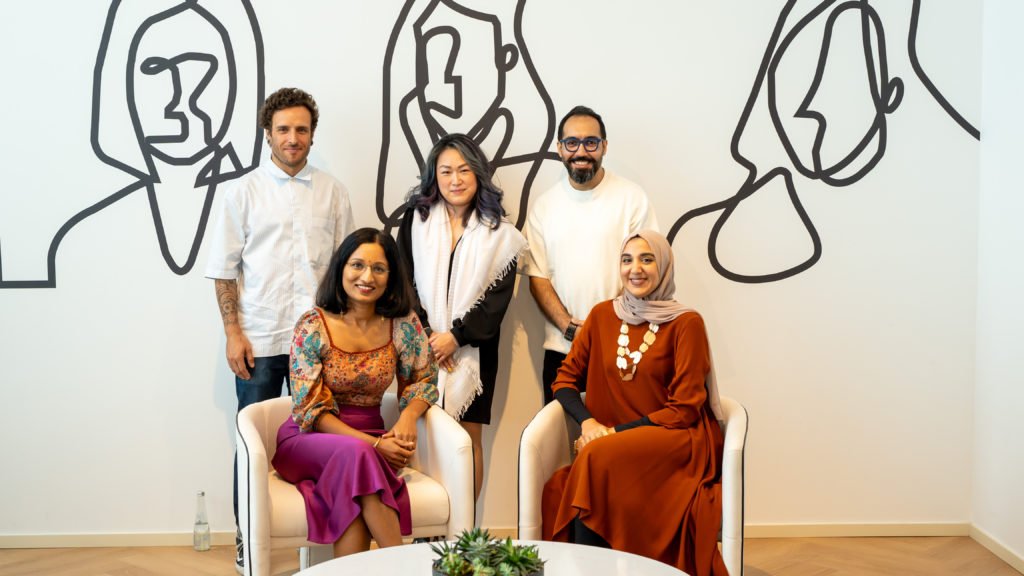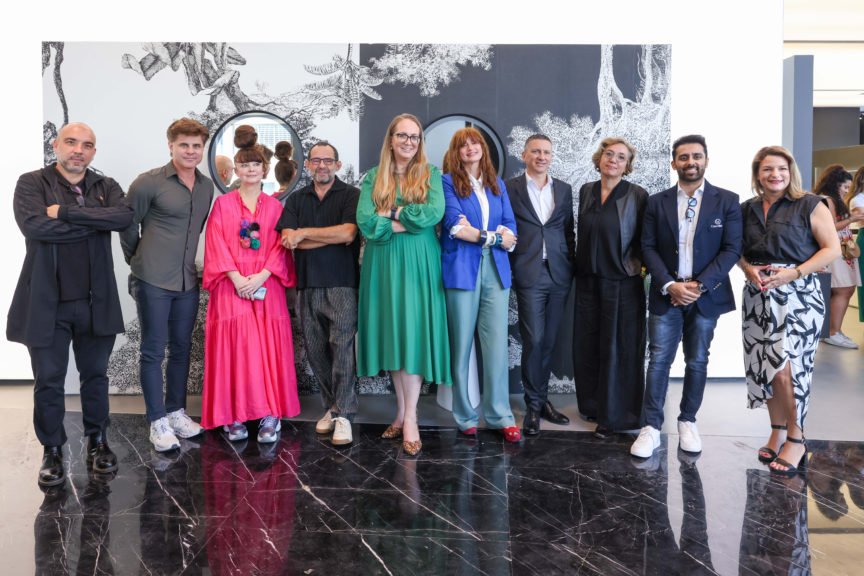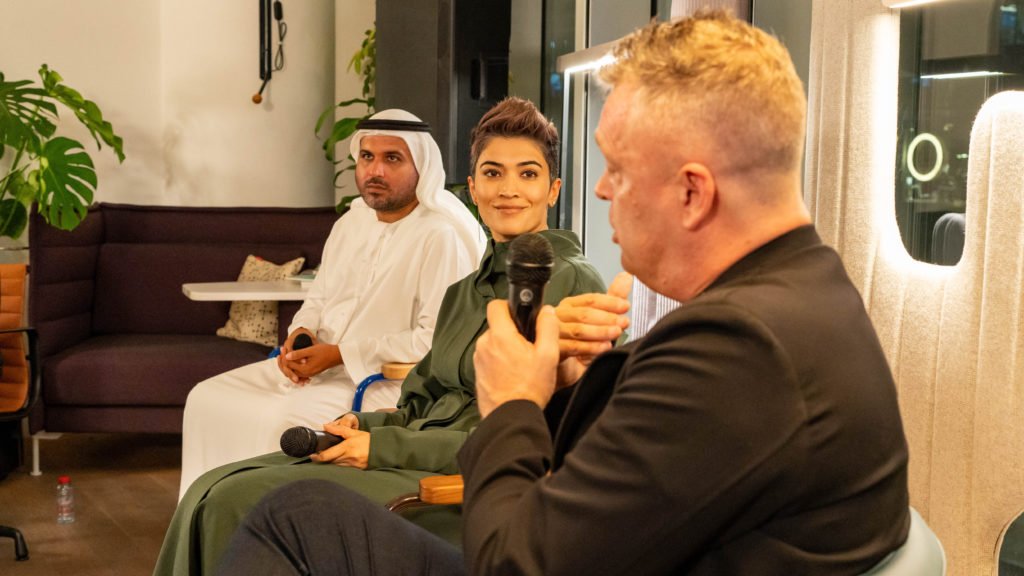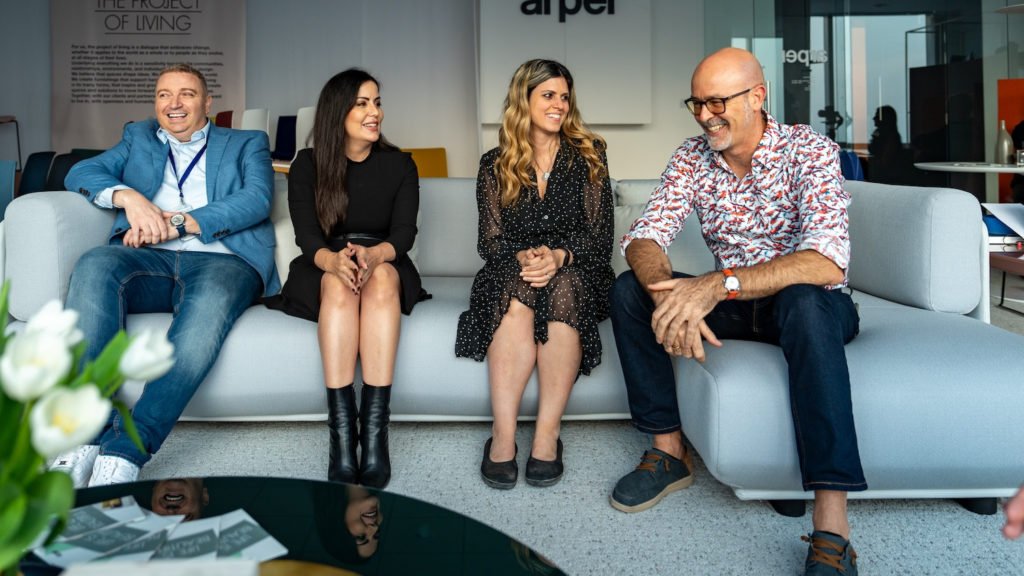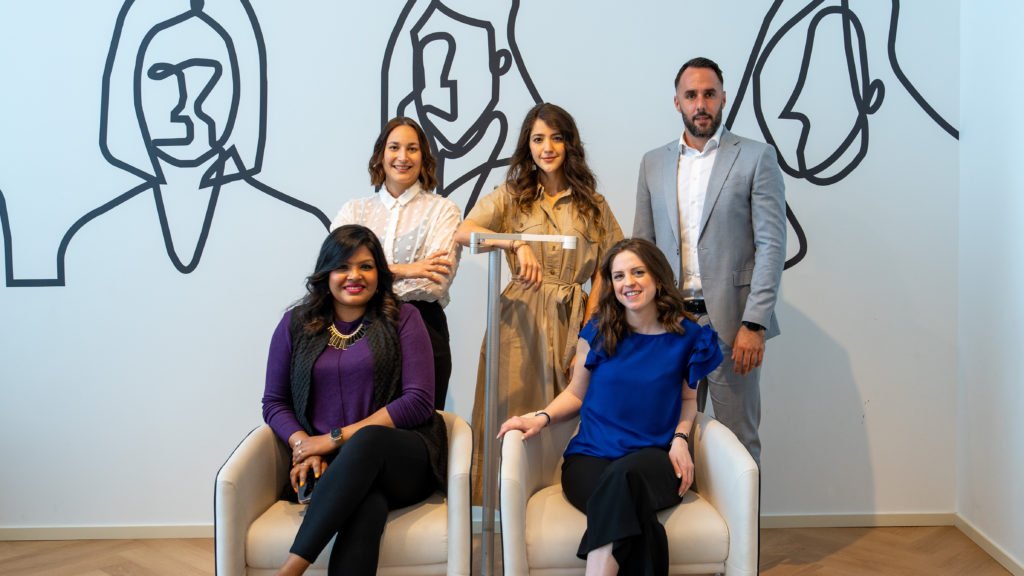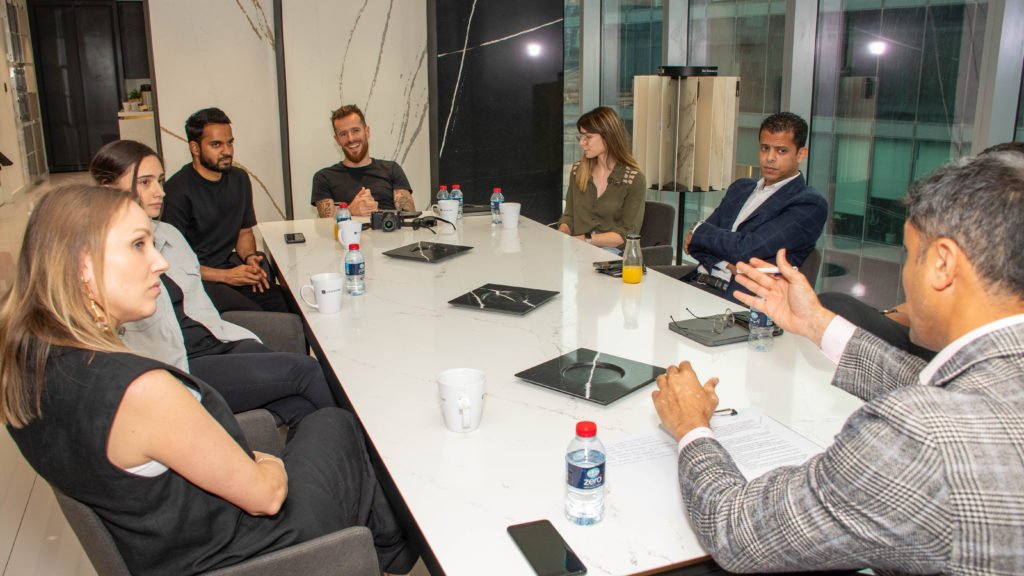In our latest roundtable, sponsored by Kohler, we chat with experts who represent all sides of the project journey, from client and inception to inspiration, design and end-user. Here is what they have to say about wellness-focused interior design.
THE EXPERTS
From left to right: Christian Merieau, Founding Partner, MMAC Design Associates; Lara El Hani, Design Director, Krisitina Zanic Consultants; Alan Orchard, Commercial Director – Middle East & SSA, Kohler; Nadia Shafiq, Associate Director – Design, Omniyat; Valentina Cereda, Founder – Integrative Architect, Energy & Space
The Definition of Wellbeing
Whether we realise it or not, design is critical to wellbeing. Even the simplest of elements in a space can have a massive impact on our mood and health. Take natural light, for instance. There is a clear correlation between a person’s mood and the amount of natural light in a space.
But before we get into the effect of interior design on our wellbeing, it’s important to clearly understand what wellbeing is.
“For interior design to be successful, we have to consider the emotional wellbeing of a user or inhabitant. When you enter a space, what hits you about the design. You’re subconsciously thinking thoughts, such as, ‘Can I stay here on my own? How relaxed am I feeling right now?’ etc. And it’s not only about emotion, but also about how it makes you move to the next stage. How do you flow within it, does it serve the purpose, and do we identify with it? Interior design serves purpose through both form and function, as opposed to art that is mainly aesthetics and its effect. Interior design serves the human being living in that space. A lot of great designs have failed because they did not connect on a human level because people simply could not live there. It was too loud. It was too noisy. “Even some restaurants just have a certain vibe that makes you want to keep visiting.” says Lara El Hani, Design Director, Krisitina Zanic Consultants.
“Wellbeing can mean different things for different people,” explains Valentina Cereda, Founder – Integrative Architect, Energy & Space.
“Everyone has a different definition of what makes them happy. However, one thing that makes everyone feel good is when they’re immersed in nature. Whether it’s the mountains, the lakes, or by the sea – that’s where everyone feels contentment. And the common denominator of that is that you are immersed in natural frequencies. That’s why I think design is so key to wellbeing; we should be creating spaces that resonate with the frequencies of nature because that’s something that makes us all feel better.”
-Valentina Cereda, Founder – Integrative Architect, Energy & Space
Nadia Shafiq, Associate Director – Design, Omniyat, further adds her input from a client’s perspective. “For me, wellbeing is about the senses and how to apply that within a design. Operationally, we would ask the designers how these senses can be applied? And how our guests are experiencing that through their journey, whether it’s a workplace, residence, or hotel. How the end user is continuously experiencing that journey is really important. We talk about all this in the concept stage, but sadly, as we follow through to the end, we lose some of that. And so, from the client-side, the question is more how to keep wellness in the picture and actively engaged.”
Christian Merieau, Founding Partner, MMAC Design Associates, further adds, “I think wellness doesn’t mean the same everywhere. Wellness in the office, wellness at home, and wellness in retail can be completely different experiences. This is where we, as designers, have to gather the knowledge and the expectation for the end-users to try to adopt that as well. A major problem that is happening is there are a lot of Pinterest-based design firms that kind of just grab and go. So there’s no thought and depth to the design.”
Design, Technology, and Wellness
In a world where we’re more connected than ever, it’s important to take a look at how the tools and technologies used to connect us affect our wellbeing. Whether it’s our phone or the smart home technology that’s now nearly ubiquitous in homes, it’s time we examine our approach to designing and using technology with a closer lens.
“Our approach to the subject of well being is largely guided by experts in the field,” says Alan Orchard, Commercial Director – Middle East & SSA, Kohler. “We are about water, which in itself is a therapeutic medium. We use water to enhance wellbeing, whether it is in a private space in the home, or a mixed-use space in a public area. We believe that the subject of well being and hygiene is a personal choice. And so we’re trying to play a bigger role. We’re also guided by the current realities in the world and what can be used to improve our experiences, such as an immersion or fusion of light and water with music, through intelligent products. We see the traditional bathroom as the Cinderella of some interiors where the tub takes centrestage. It combines the views from the villa to the ocean with the bedroom playing a secondary role. This integrates the bathroom experience in an effort to transcend and transition, and promote good, healthier habits in the living space in general, guided by the interior design experts. It’s no longer simply about technology or product design. It’s about smart design as far as interior spaces are concerned and how it makes you feel.”
“Good design caters to multiple experiences, especially in the hospitality industry. There are some areas that have to be animated to create a sense of experience and energy. There’s no one solution that fits all, and we have to really cater and create spaces where you can go from one area to another and experience something new and exciting.”
– Christian Merieau, Founding Partner, MMAC Design Associates
On the topic of technology driving design and wellness, Christian poses another question, “In the age of TikTok, Instagram, or even Pinterest, are we considering how that is affecting our design decisions and, in turn, the wellness quotient?”
Valentina responds, “Social media is a tool, and should be treated that way. Two decades ago, nobody had social media. We had other tools, such as books. When we were in college, we had to use tracing paper, and go to the library for research. Social media is a tool, and you either use it properly or you don’t. I have a lot of clients that send Whatsapp images, which I initially think is ridiculous. But then I step back and think, okay, what do I get from this? What is the common theme between all of these pictures? And sometimes I challenge the client. So you sent me this picture, do you really want a black wall on your staircase? To which they reply, ‘I just like the lighting on the railing’. So we have to think deeply and critically about the technology we use and how it can affect the end user.”
Nadia further adds, “We recognise that there’s this tool out there, but how do we address it in the most useful way? Let’s say there is a client who wants Instagrammable moments. As designers, we should take that input and mold it into a design solution that has all the variables that we’ve spoken about, and then give a unique solution. It’s understandable that designers may not like clients using social media as inspiration and input, but you have to take into fact that a developer is making that property to make money to get hits. So we’re not just here to produce beautiful designs, we want market value too. There’s a profit-driven intent there, which has to be taken into consideration.”
Wellness is a Right
Designers, businesses, and anyone in a leadership role, should not consider wellness as a cost that leads it to be evaluated in terms of ROI. It should be a mandate and a right. The welfare of people should be the priority of any organisation or government.
“In the same way that LEED has become part of the law in some places, there should be some regulation imposed on developers,” says Christian. “That would make our lives a lot easier. Again, this shouldn’t be something that only wealthy people can afford. It should be for everyone, and it doesn’t have to be some fancy solution. Wellness is something we should be a lot more aware of, and it should be the focus of our design as well. Design is already about focusing on people’s experiences. We just need to make wellness a key focus in it too.”
“I would like to see our built environment blending in with nature and aligning with its natural frequencies,” says Valentina. “We should stop having to go for a staycation or a spa day for an escape. We shouldn’t have to leave our houses or cities to find natural environments in order to feel better. We need to start building better and building differently. So we automatically resonate with these natural frequencies instead of blocking ourselves into concrete boxes and isolating ourselves from nature.”
“We are the custodians of our youth,” says Alan.
“With Kohler, our direction is clear. We must leave the world in better shape than we found it. We are the custodians of the youth that we spoke about. Let them not inherit our mistakes and misfortunes. It can be at an organisational level in terms of the impact that we have on the environment, or a formal commitment, an open commitment, and a global commitment. Considering waste as inputs rather than outputs and remanufacturing creates bespoke connections. So wear it on your chest, not only on your sleeve – that is important for us. And that is the higher calling. Ultimately, we have a huge responsibility that we all share.”
– Alan Orchard, Commercial Director – Middle East & SSA, Kohler
“I feel like the future is more and more human-centric,” says Lara. “In the previous decades, things went a bit sideways. We’re always stressed and we don’t know why. But we’re becoming more conscious, on every level, and we can see it with trends, such as organic food. A lot of natural foods are taking over, we’re ditching plastic bags at the supermarket. Everything is moving towards that more natural approach, everyone is being more conscious about it. And to succeed and thrive and survive all of these in that order, you need to go with the flow. So unless we embrace the natural way, the healthier way, we’re going to go the way of dinosaurs. Or, we will need to go to Mars!”

